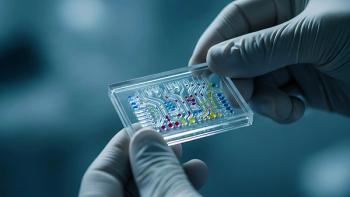
- BioPharm International-11-01-2019
- Volume 32
- Issue 11
Biopharma modeling, now and five years from now
Bob Lenich, Emerson's business director for global life sciences, shares insights on where biopharma modeling is now, and where it is heading in the near future.
Bob Lenich, business director for global Life Sciences at Emerson, shared his views on where biopharmaceutical modeling is being used most extensively now, and where it is likely to be used in the near future (i.e., five years from now) with BioPharm International. As he notes, there are differences in the way modeling is being used in development and manufacturing.
BioPharm: What are the three most important applications for process modeling today in biopharmaceutical development?
Lenich: In development, we are seeing greater use of modeling in quality parameter optimization, continuous yield improvement, and facility design and fit. Key quality parameters for biopharma may not be directly measurable or may require converting analytical measurements (e.g., using near-infrared [NIR] or Raman spectroscopy) to the required quality value. ‘Soft-sensor’ correlations and converting spectral data to the required process value are examples of using models to generate key quality attribute data in real time.They can then be optimized through advanced control applications by the automation system.
As biopharma moves from batch to continuous production processes, having a digital twin model of the unit operation facilitates yield optimization of individual pieces of equipment and the overall process. A medium-to-high-fidelity process model allows development of the required automation for the production process to proceed off-line and as new equipment is added to ensure proper process control. Finally, having a digital twin model of the facility construction allows verification that the equipment in the facility will physically fit and operate properly before construction commences.
BioPharm: Where are modeling’s top manufacturing applications?
Lenich: In manufacturing, modeling is being used for throughput de-bottlenecking, optimizing processes and minimizing test runs, training operators and certifying their training, and validation. Most manufacturing processes don’t run at (or above) design capacity due to unforeseen constraints in equipment sizing, utility capacity, or material flow. Having a comprehensive digital twin of the facility operations allows bottlenecks to be identified and addressed to ensure optimal facility performance. For instance, organizations can utilize a digital twin to perform engineering runs during product change-over in a digital environment to prove out the process and automation before going to live production. This approach can minimize the use of expensive materials and ensure that the production process is properly tuned.
As these organizations add new equipment and personnel, they can more effectively and efficiently upskill the workforce to optimize operations via modeling. When new equipment or processes are added, users can be trained on the process, process upsets, and how all the manufacturing systems work together. Users are also leveraging dynamic process modeling to complete factory acceptance tests off-site. Handling the tests this way minimizes equipment check-out time and automates the generation of validation documentation to help reduce the associated capital project schedule risks.
BioPharm: What will be the most important applications five years from now?
Lenich: Once better models of the equipment are available, design of experiments for a new process can be done off-line to see whether the new protein works or the manufacturing process is viable. In addition, virtual and augmented reality experiences can be integrated with digital twin technology that provides immersive simulations of the facility. Using modeling, responding to deviations will also be easier, because process developers can run ‘what if’ simulations faster than real time to determine the best ways to address a problem. Another use will be in predicting equipment problems to avoid problems and deviations.
BioPharm: Is there any resistance to modeling in the industry?
Lenich: Being able to make modeling a more integrated part of development and manufacturing requires getting quality organizations and regulatory groups to become more comfortable with the concept that a ‘black box’ can deliver repeatable quality performance. This mindset change will also require expanded change controls so that users can verify that the correct model was used and that if changes are made to a model that there is traceability to what was changed and why it was changed.
Articles in this issue
about 6 years ago
A Diverse Landscape of Patent Issues Seen in the US, UK, and the EUabout 6 years ago
Modeling Comes of Age in Biopharmaabout 6 years ago
Applying Lessons Learned from the Semiconductor Industryabout 6 years ago
What’s New in Manufacturing: Downstream Technologiesabout 6 years ago
KUBio Box for Viral Vectorsabout 6 years ago
Zippered Lab Coatabout 6 years ago
More Consistent Drug Inspection System on Horizonabout 6 years ago
Signatures–What’s in a Name?about 6 years ago
Modernizing Flu Vaccine ManufacturingNewsletter
Stay at the forefront of biopharmaceutical innovation—subscribe to BioPharm International for expert insights on drug development, manufacturing, compliance, and more.




